Dolpo trekking is considered one of the hardest trails in Nepal. It passes mostly above 4000 meters altitude. The truth is that this trip does not come with many luxuries, and the trekking permit is expensive. But it will definitely be one of the most rewarding, memorable trekking that you can undertake in the Himalayas. Dolpo is a special part of Nepal, partly because it lacks all the forest greenery. Instead, it stands out with its dry, barren rocky mountain landscape, almost unrealistically blue-colored lakes, and inhabitants that follow Tibetan culture.
- Where is Dolpo in Nepal?
- What is the best season?
- Do you need to hire a mountain guide for Dolpo Trek?
- Why is the Dolpo trekking so expensive?
- What can you do if you are alone?
- How long is the trail?
- Why is the Dolpo trek one of the most adventurous Treks in Nepal?
- The highlights of the Dolpo Trek
- Desperate search for “Yarsagumba” in the Dolpo region – the precious treasure of the Himalaya
Where is Dolpo in Nepal?
Dolpo is located in northwest Nepal in the Karnali province and borders the Tibet Autonomous Region of China. It is one of the seven provinces of Nepal stated in the constitution that was only adopted in 2015. While being the largest province of Nepal, making up almost one-fifth of the country, it is the most scarcely populated at the same time. Dolpo accommodates the biggest national park in the country, called Shey Phoksundo. The Phoksundo Lake that just strikes you with its extremely vivid blue color, is the deepest and one of the most beautiful lakes in Nepal. This marks the starting point of the Upper Dolpo region. The province was named after the Karnali River, which has its source in the holy Mansarovar lake located behind the Himalayan Plateau in Tibet.
Read more about the best short and long treks in Nepal
The Upper Dolpo region was closed for foreign visitors till the 1990s and remained one of the most untouched and secluded mountain areas. Dolpo was basically identified on the map after Peter Mattheissen’s “Snow leopard” was published that is set in Dolpo.
What is the best season?
Dolpo nestles just behind the Himalayas, which makes its climate different from the rest of Nepal. It is one of the two places (the other one is Mustang), where there is no rainy monsoon season. It is almost completely dry and the landscape resembles that of the Tibetan Plateau as opposed to the green monsoon watered mountains of the same altitude elsewhere in Nepal.
Do you need to hire a mountain guide for Dolpo Trek?
This is the Trek where you cannot do solo trekking. Having the status of a secret area, the Nepalese government obliges trekkers to hire local guides and porters both for Lower and Upper Dolpo.
Due to the remoteness of the region, you definitely need the expertise of a local trekking agency, who can organize everything from permits to food and accommodation. Upper Dolpo is an adventurous high-altitude Trek, where health issues can pose a problem as well.
Why is the Dolpo trekking so expensive?
Dolpo is a restricted government area and thus controlled by the Home Ministry. Therefore, the trekking permit is costly:
For Upper-Dolpo: 500$ for 10 days per person and every additional day after the 10 days costs 50$. It means that only the cost of your permits will amount to 600-700 USD.
For Lower-Dolpo: it costs70$ for a week, and every extra day is 10$.
The entry to the national park costs: 35$
This Trek cannot officially be completed alone. Single permits are not issued at all. Minimum 2 people need to apply at the same time.
This is a remote, off-the-beaten trail, which offers way less comfort for trekkers. In the lack of guesthouses and lodges, all the necessary stuff needs to be transported: vegetables, cooking equipment, tents. Two trekkers are accompanied by 6 porters and one mountain guide.
You need four domestic flights during this trekking. Flight cost amount to 700$.
The Lower Dolpo tour costs 3400$/person, the Upper Dolpo Trek costs 5000$/person if 2 trekkers participate. The price will not drop significantly in the case of more persons, as more hikers increase the need for porters and guides as well.
But keep in mind that besides the expensive permit, the relatively difficult access, and less comfort, Dolpo is simply amazing, probably the most beautiful Trek in Nepal.
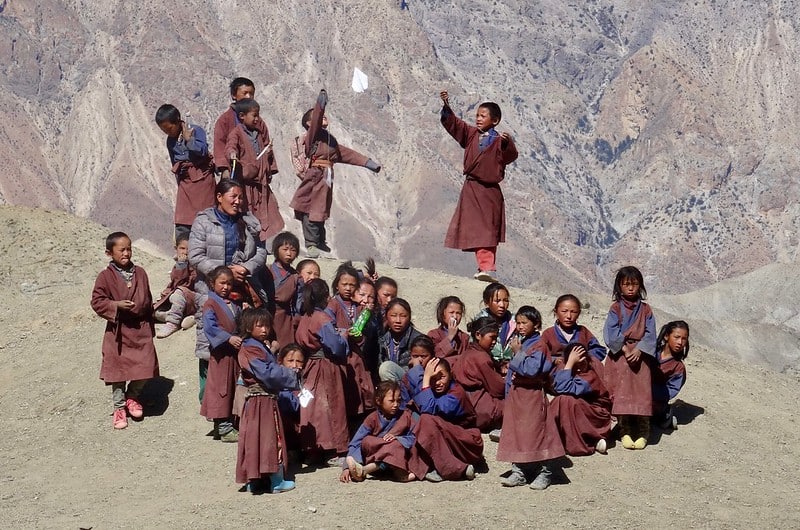
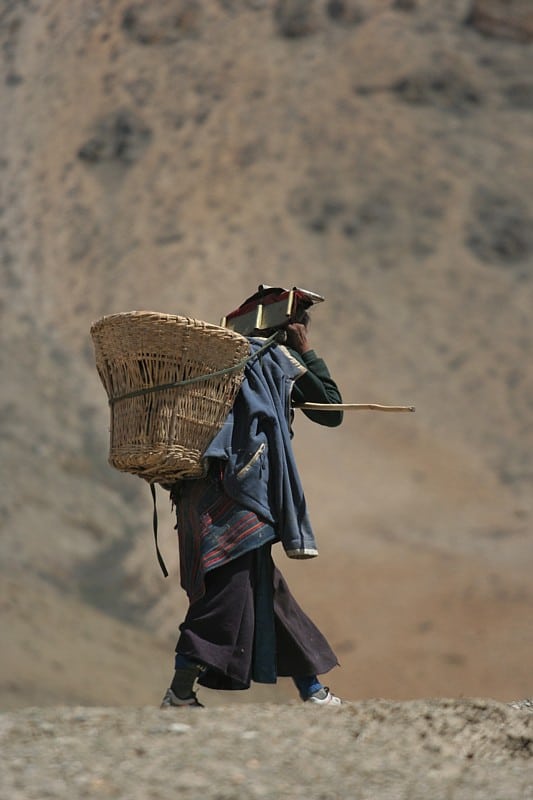
What can you do if you are alone?
As solo trekking is not permitted in the Dolpo region, the best thing you can do is to join a group. Since this trekking is not so common, trekking agencies do not really publish fixed tours for Dolpo. Many hiking companies, among others Nature Explore Trek, closely cooperate. They make a pool of individual trekkers and organize them in tours according to their interests. This method works for other, less complex tours as well. Just sign up at the company and wait for their feedback.
How long is the trail?
It takes approximately 18 days to complete the Lower Dolpo and almost a month in the case of the Upper Dolpo Trek.
Why is the Dolpo trek one of the most adventurous Treks in Nepal?
The Upper-Dolpo is considered as one of the most difficult Treks in Nepal (9/10). Trekkers have to spend many nights over 4000 meters, some even close to 5000m, whereas the highest point of the trekking is 5600m. The lack of oxygen at this altitude makes it more difficult to complete as compared to other well-known treks
Due to the lower average altitude and elevation, the Lower Dolpo Trek is easier (7/10). The highest sleeping point is 4000 m.
This trekking is much less visited and thus can’t provide much comfort with modern facilities. It also means that you may not meet anybody for 4-5 days. Be ready for lonely hiking.
You can read more about everything you need to know about trekking in Nepal
The highlights of the Dolpo Trek
Getting to the starting point of the trek is an adventure itself. Your only choice is to take a spectacular flight above the Himalayan range to Juphal town, from either Nepalgunj or from Surkhet, where the three-week-long Dolpo trekking actually kicks off.
The first half week you hike through green forest and lush vegetation. The rest of the days you spend in the high mountain region steadily over 4000 meters.
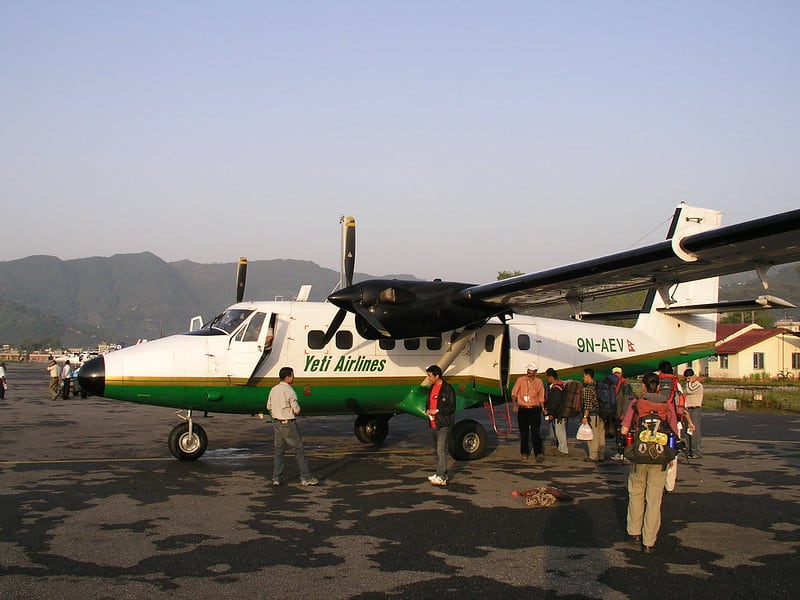
The highlights of the Upper-Dolpo trek:
- Along the Dolpo trek you catch a glimpse of the Kanjirowa peak (6883m) and the world’s 7th biggest mountain, the Dhaulagiri (8167m), which means “white mountain” in Sanskrit.
- The Phoksundo Lake at the entrance of Upper Dolpo with its turquoise color is so amazing that you can’t help but sitting and keep on watching and trying to store the view deep in your memories.
- If you arrive in the period of May and June, you can witness the harvesting of the “Yarsagumba” (Himalayan Viagra), when most Nepali move to the Highlands for several weeks in search of the unique caterpillar.
- The inhabitants of Dolpo have Tibetan roots, which makes the region culturally also interesting. People from Tibet were said to have immigrated to this part of Nepal and introduced the Bon religion even before Buddhism in the 11th century. In traditional Buddhism monks and nuns are not allowed to get married but in some parts of Dolpo and Tibet, the monks of the Bon religion can be seen with children.
- The villages along the trail pass by many Buddhist and Bon monasteries.
- The more than a thousand years old Shey gompa (monastery) at 4200 meters is one of the main attractions in Upper Dolpo. Thousands of devotees gather at the highland monastery in Shey for its famous Dragon Festival that takes place only every 12 years (in the year of the dragon), the next one in 2024! This is a great opportunity to get insight into the pre-Buddhist Bon religion and Tibetan Buddhism. Shey is located in Upper Dolpo that lacks almost every modern facility and is still one of the most isolated mountain regions in the world.
- The Dho Tarap village is one of the highest human settlements in the world (3900m-4200m) and is another highlight of the Trek. This is an important trade junction place of Dolpo. The traditional houses of Dho Tarap have larger underground living spaces with only a small portion peeking above the surface. The natives of Dho Tarap are very friendly and welcoming. It feels like going well back in time.
- Saldang village is the largest village of Upper Dolpo.
Please do not bargain a lot when you decide to buy some homemade goods because it is costly for the locals to bring all the supplies from the city to the mountain!
- Dolpo is also the place, where the most snow leopards are found in Nepal, 130 to 160 in the national park. Locals suffer every year serious damages since snow leopards hunt yaks that are essential for the farmers.
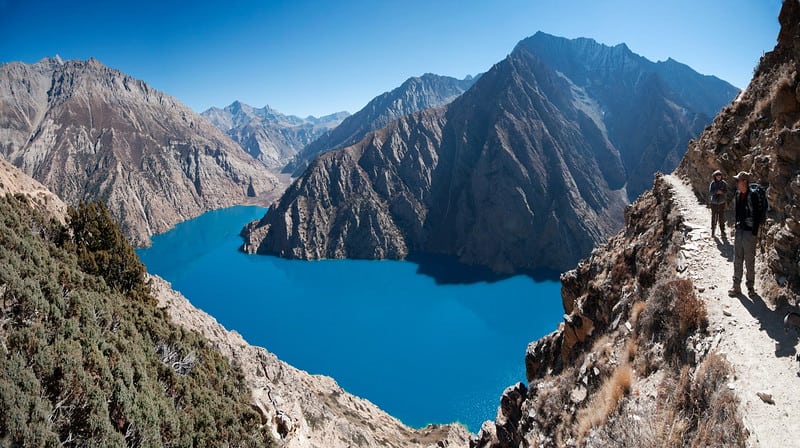
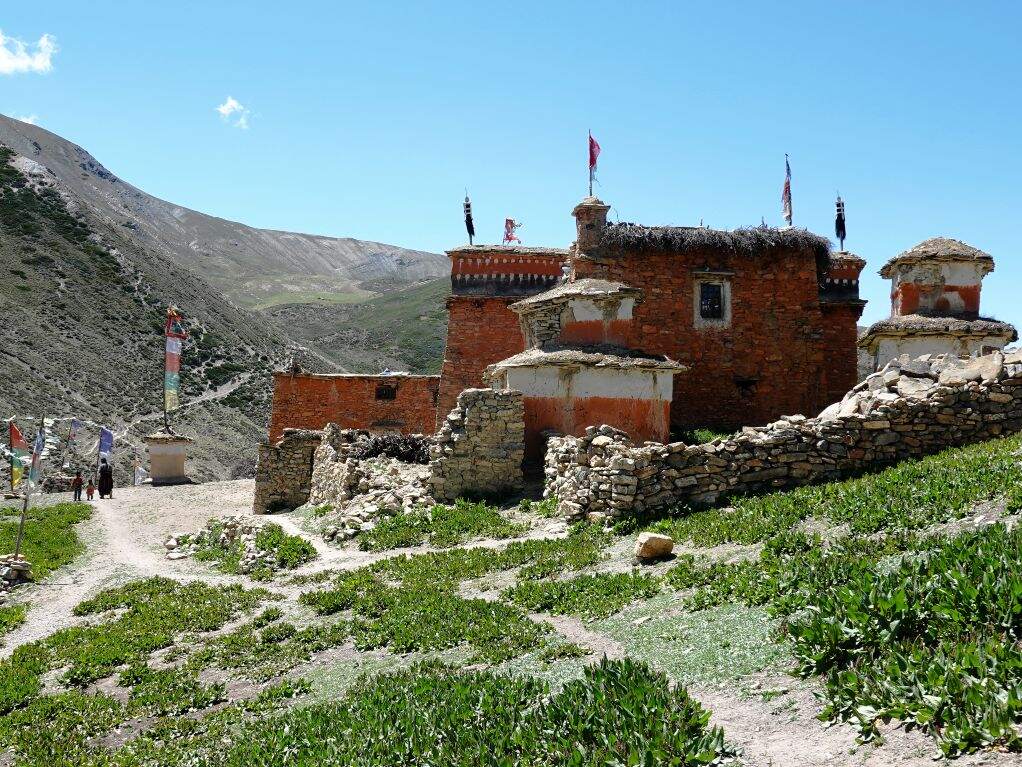
The highlights of Lower Dolpo:
- Lower Dolpo abounds in the famous herbs, the “Mamus” locally called Chiraito. More than hundreds of varieties of valuable herbs and natural plants can be found in the high dry land. The “Mamus” treats various diseases including malaria, skin diseases, worm infections, stomach aches, and many others. This precious plant is an important source of income, which gives a chance for local families to provide better schooling for their children.
Lower Dolpo versus Upper Dolpo
The Upper-Dolpo Trekking covers the Lower Dolpo route as well. If you have the stamina, time, and budget you should go for the Upper-Dolpo Trekking:
- You witness more of the local culture with signs of the ancient pre-Buddhist Bon religion, like praying walls.
- Offers bigger wildlife with blue sheep, mouse deer, and marmots.
- Although trekkers choose Dolpo for culture and the beauty of nature, the Upper-Dolpo offers a better mountain view. You can still see the Dhaulagiri and Kanjirowa peaks.
- The major attraction of the whole region, the Phoksundo lake is part of both Lower and Upper Dolpo.
Desperate search for “Yarsagumba” in the Dolpo region – the precious treasure of the Himalaya
In May and June, almost all locals pack their bags, carry everything from tents to cooker and clothes in big baskets on their back and move to the snowy altitudes in Upper Dolpo. They stay in tents for 1-2 months in the search of “Yarsagumba” (Caterpillar), which literally means “herb in the summer and insect in the winter’“.
“Before the rainy season, the fungus infects caterpillar larvae living in the grassy soil. When it finally attacks the head, the larvae die. The stalks of the fungus then propagate in the head, growing 2-3 inches long and becoming brown in color.” (Source: www.theadventuremedic.com)
There is an incredible demand for the “Himalayan Viagra” in China, which makes it more precious than gold.
Schools literally empty during harvest season as all pupils and teachers participate in the harvest. There is no way to stop that. Even imposing a fine had no impact. So they just decided to provide a holiday for this time of the year.
Apart from agriculture, it is one of the main sources of income for locals, but it is a huge challenge at the same time. The steep and rough trails coupled with extremely cold temperatures and low oxygen levels take a death toll every year. The best quality Yarsagumba can only be found at 4500 to 5600-meter altitude and for most of them, this is the only way to sustain their livelihood for the next ten months. More than 30,000 people take the journey every year.
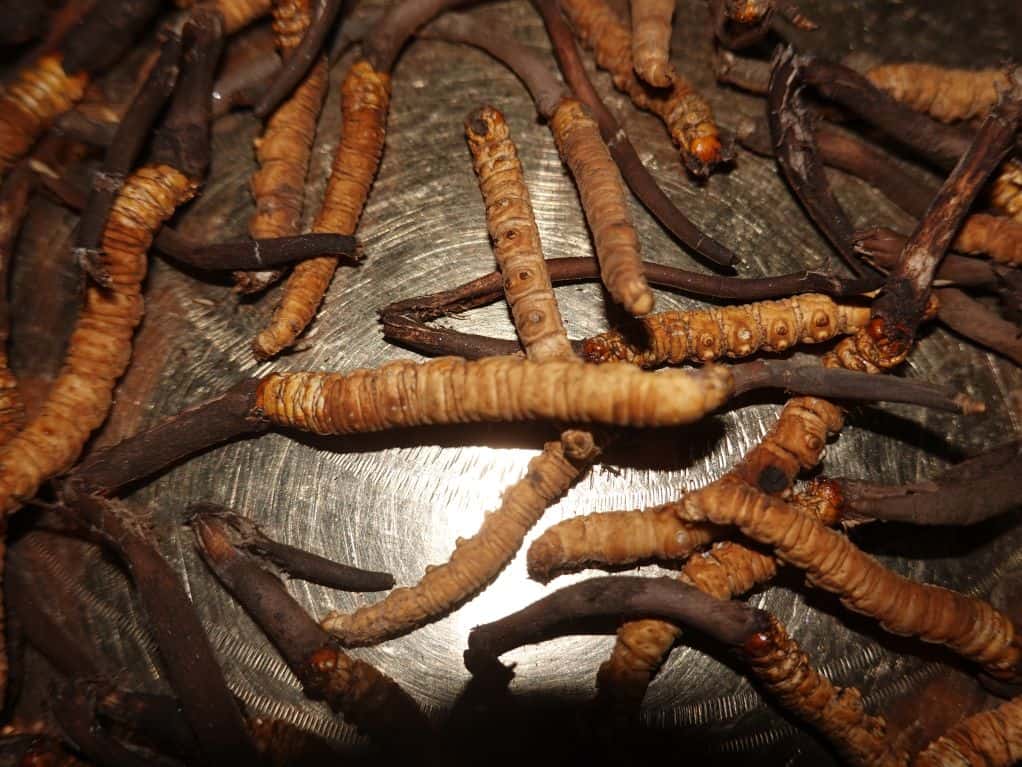
A harvester needs very sharp eyes to spot the Yarsa and can pick only 10-15 pieces a day. Due to exploitation this number even diminished in the last years. They sell it to traders in Kathmandu, China, and Tibet. Dolpo’s highland forest free landscape is the place where you can find the most and best quality yarsagumba in the world.
Three and a half thousand individual pieces make up a kilo and about 2500 kg are collected every year in Nepal alone. Half of that comes from the Dolpa District. Harvesters can expect to earn the equivalent of 18 USD/gram, but it is sold already for 100 USD/gram in China.
According to the Himalayan legends yaks and goats were once taken to graze in the high pastures. Revitalized after eating Yarsagumba, they were chasing the opposite sex with a renewed vigor. Later, when people also tasted it, they gained more energy and experienced a boosted libido. Apart from that, it strengthens the lung and the kidney, treats cancer and asthma. Traditional Chinese medicine makes use of that for 2000 years.
The demand For Yarsa boomed after 1993 when three Chinese athletes smashed world records at the World Athletics Championships allegedly due to regularly consuming Yarsa soup and turtle blood.
Since the Nepalese government lifted the ban on Yasra harvesting in 2001, the price skyrocketed. It is a crucial source of income for the inhabitants of the impoverished Himalayan Highland, but the crazy rush for Yarsa leads to deadly disputes between gangs.
For a detailed itinerary please visit Nature Explore Trek’s website.
Source: https://www.theadventuremedic.com/features/yarsagumba-the-quest-for-himalayan-viagra/
Source: https://thediplomat.com/2014/08/yarsagumba-biological-gold/
Do you feel like going to discover this incredible Trail? Pin it for later!
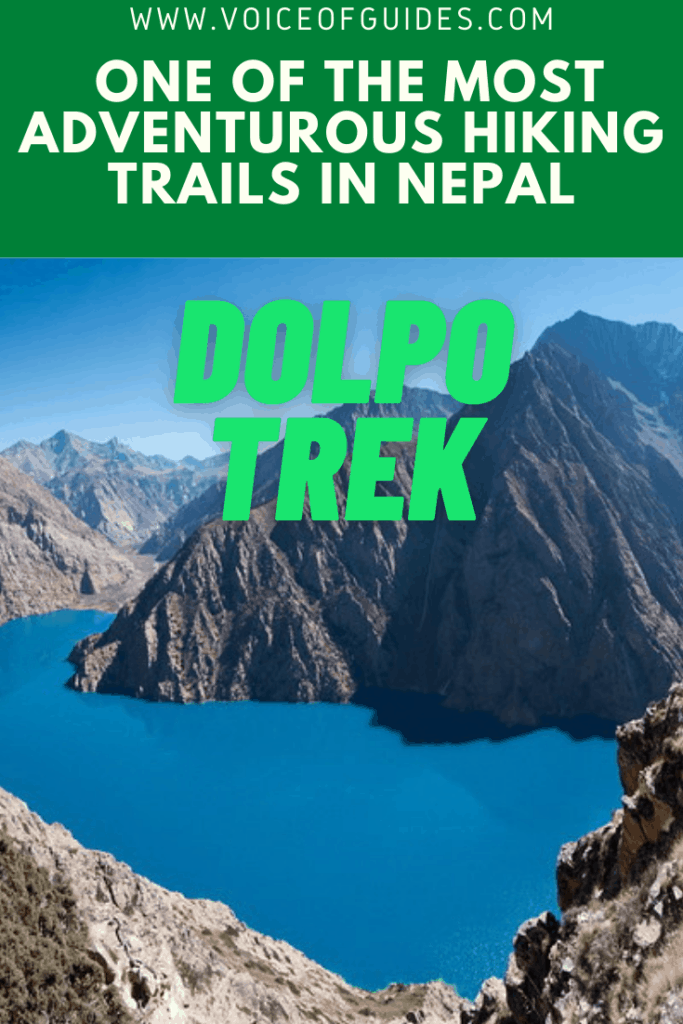
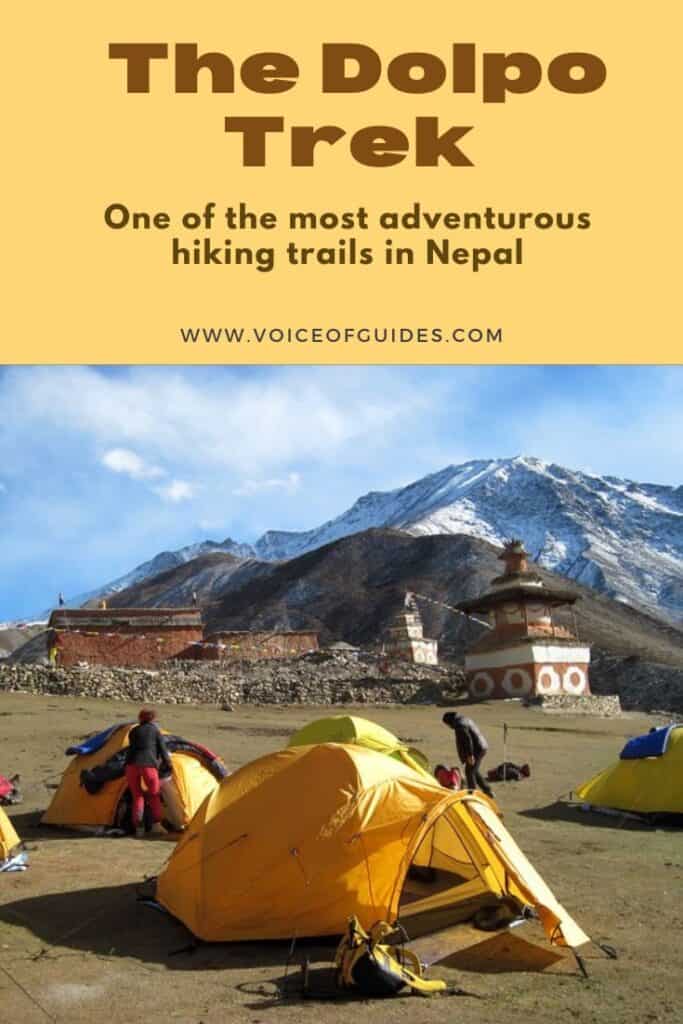


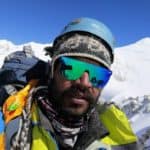
Pingback: The best short and long treks in Nepal | Voice of Guides